|
Igor Sikorsky Patents
Sikorsky Division of United Aircraft Corporation During World War Two
Stratford, CT
1923 - Current. Sikorsky is currently owned by Lockheed-Martin
This page added 1-26-2023.
To me, Sikorsky is
synonymous with helicopter.
The bottom line is that Igor I. Sikorsky is responsible for the
helicopter which has become ubiquitous in our current world.
Sikorsky and his aircraft are not as well
known or appreciated as many of other famous aircraft entrepreneurs and
designers of the first half of the 20th Century. This is due to
the timing of the invention of a properly operating rotary wing
aircraft. While the piston powered fixed wing aircraft was at its
apex during World War Two, the helicopter was just beginning its ascent
to its important in aviation. With limited use
beginning in 1943, Sikorsky-built helicopters played a minor role in
the winning of World War Two. It was not until the Korean War that
Sikorsky-built helicopters came into their own in the search and rescue
function. However, the Korean War is known as the forgotten war,
and Sikorsky's important role in it is also lost to most historians. Helicopters
with the Sikorsky name have been used by the various services of the
U.S. military continuously up through the present. Currently, the
Sikorsky UH-60 Blackhawk helicopter and various derivations of the
aircraft are in service with the American military.
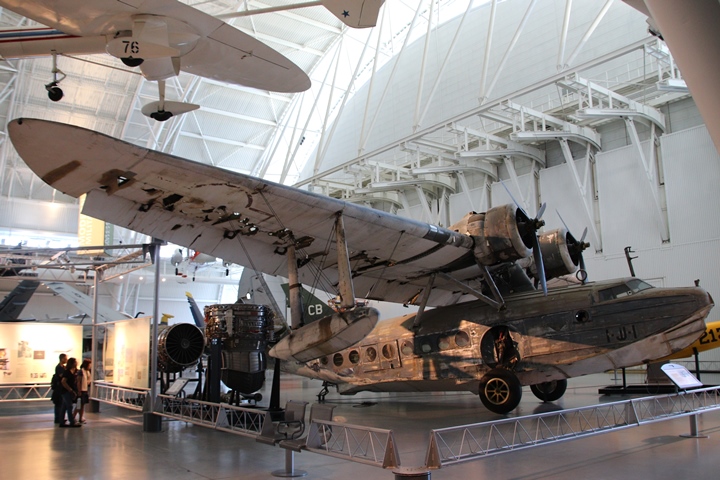
This Sikorsky JRS-1, on display at the Udvar
F. Hazy Center of the National Air and Space Museum in Chantilly, VA,
may appear insignificant because she is old, dilapidated, and tattered.
Yet this Igor
Sikorsky-designed amphibian has the right to look this way, as she is
one of only three aircraft that were at Pearl Harbor on December 7,
1941, which still exist today. She was one of ten Sikorsky JRS-1s
at Pearl Harbor on that fateful day. After the attack, this
aircraft was put into immediate service in the attempt to search and
find the Japanese fleet. She continued to serve her country
through 1944 when she was struck off the Navy's records. Then she
was used by the National Advisory Committee for Aeronautics (NACA).
In November 1960 she became part of the collection of the National Air
and Space Museum and was finally put on display in September 2017.
Udvar-Hazy has a collection of over 150 aircraft on display, but to me,
this is the center piece and crown jewel of the museum and is worth the
trip just to see this particular aircraft. She may be old and
tattered, but she is a true Pearl Harbor survivor and World War Two
veteran. Author's photo.
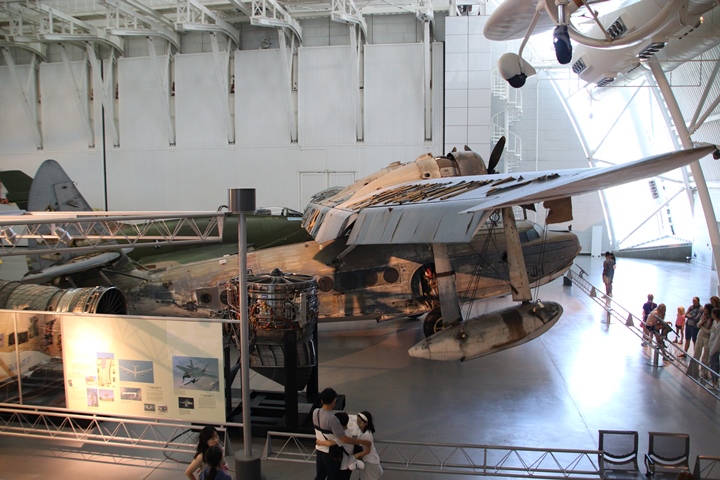
Author's photo.
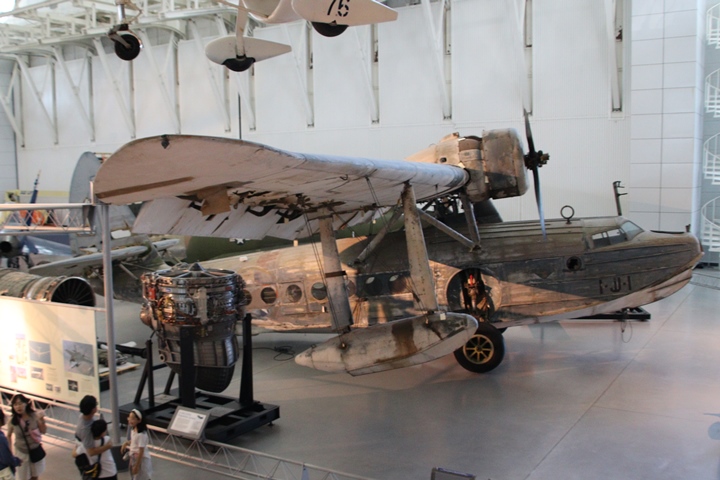
Author's photo.
Igor Ivanovich Sikorsky was born in Kiev, in
present day Ukraine, in 1889, and was fourteen years old when the Wright
Brothers first flew in December 1903. Having previously read Jules
Verne's "Clipper of the Clouds" and Leonardo da Vinci's recently
found lost notebooks with illustrations of a man-powered flying machine
and helicopter, Igor Sikorsky began reading everything he could on the
flying aircraft. After reading newspaper accounts of Wilbur
Wright's 1908 Paris flying demonstrations, at the age of 19 he decided
to build his own aircraft. His first attempt at a flying machine
was to build a helicopter in 1909 in Kiev. He was unsuccessful as
the engines of the era did not have enough power to lift the aircraft.
Instead of giving up on aviation, Mr. Sikorsky turned to designing fixed
wing aircraft.
In 1913, ten years after the Wright Brothers
first flew, Igor Sikorsky designed and flew the world's first
multi-engine aircraft. He was 24 years old at the time. This
aircraft was known at the "Grand" and had an enclosed cockpit, dual
controls, and a passenger cabin with wicker seats. Between 1913
and 1917 he built 72 four-engine biplanes that were used by Russia as
bombers in World War One.
Because of the Russian Revolution in 1917,
Igor Sikorsky left Russia and immigrated to the United States in 1919.
Like many other immigrants, he was not able to speak English. But
he learned and began designing aircraft in the United States. In
1923 he started the Sikorsky Manufacturing Company on Long Island, NY.
In 1929, he moved his operation to Stratford, CT. That same year,
Sikorsky joined the United Aircraft and Transport Corporation which was
able to finance his aircraft development and manufacture.
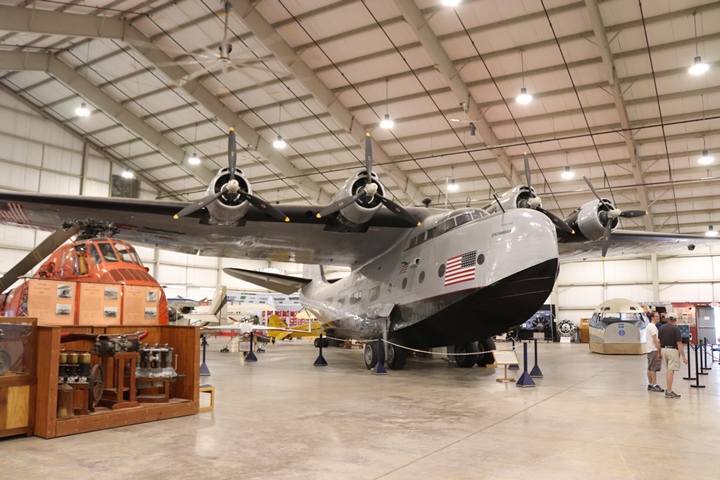
This is one of three Sikorsky VS-44As built
in an attempt to regain the Pan Am Clipper business it once held with
the Sikorsky S-42. This particular 1942 aircraft is name "Excambian"
and was owned by American Export Airlines. During World War Two it
was one of many commercial airliners that were impressed for military
service. The three VS-44s were impressed by the U.S. Navy and were
given the military designation JR2S-1. This aircraft made
regular trips for the U.S. Navy between New York, NY and Foynes,
Ireland. Of the three VS-44s built, this is the sole survivor and
is on display at the New England Air Museum in Windsor Locks, CT.
The Sikorsky VS-44s were the last of the
flying boats, as it had become unprofitable for the company to make
them. This was a decision made by Sikorsky's parent company United
Aircraft Corporation. However, Mr. Sikorsky was able to retain his
engineering crew and was allowed to work on his helicopter ideas.
While United Aircraft management did not see much commercial future for
the helicopter, it did fund Mr. Sikorsky and his engineering group to
focus their energy on helicopter development. It is a good thing
they did.
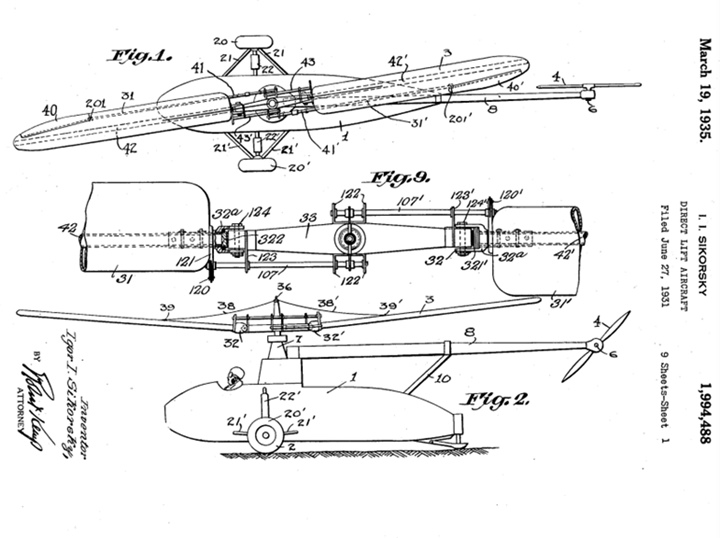
This is the first page of a sixteen page
patent awarded to Igor Sikorsky on March 19, 1935, for a "Direct Lift
Aircraft." Note that the aircraft is very similar to most aircraft
built today. The pilot and passenger are at the front of the
aircraft. This is followed by the engine compartment and the main
rotor. Lastly, there is the tail boom with an anti-torque rotor at
the end. With the exception of the of a small number of tandem
rotor helicopters, this concept is still the prevalent layout for
today's helicopters. Even when his company was involved with the
design and production of flying boats, Igor Sikorsky had not forgotten
his unfinished quest to build a vertical take-off aircraft, or
helicopter. The complete patent is shown on the
Sikorsky Patent Page.
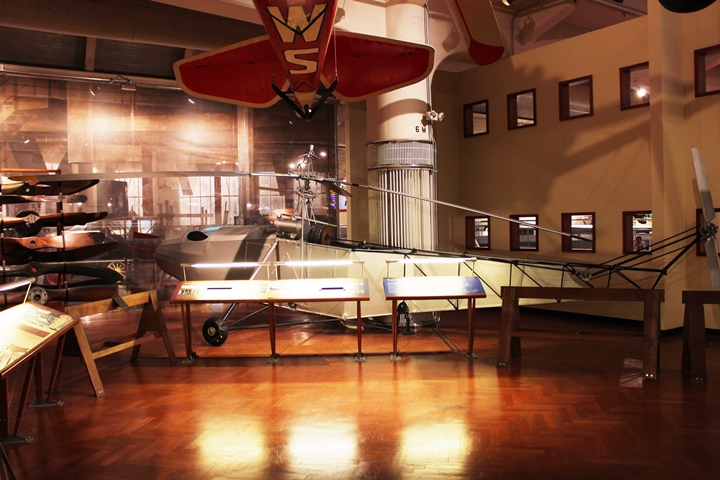
How cool is this? The original
Sikorsky VS-300 is on display at the Henry Ford Museum in Dearborn, MI.
This was the first practical single rotor helicopter to fly. All
single main rotor with an anti-torque helicopters are related to this
aircraft. It made its first flight on May 13, 1940. With the
first flight of the VS-300, aviation was changed forever. Author's
photo.
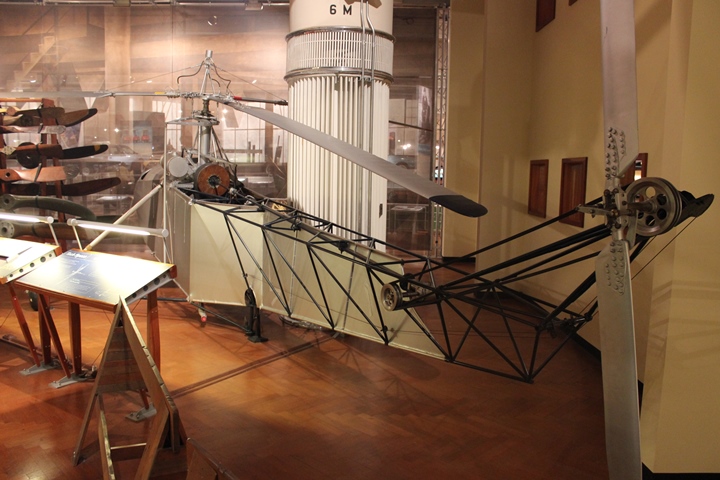
This image allows for a close look at the
anti-torque rotor drive mechanism. The long propeller shaft that
comes out of the rear of the transmission ends in a 90 degree gearbox.
The output shaft of the gearbox then drives a pulley and rubber belt.
This then drives another pulley and the end of the aircraft's fuselage
which drives the anti-torque rotor. Previous helicopter designs
were similar to today's small drones which have four propellers for
lift. With a single main rotor helicopter, without the anti-torque
tail rotor the aircraft will rotate uncontrollably about the main
rotor's main axis. The invention of the tail rotor was a
significant improvement in the development of vertical lift aircraft.
Author's photo.
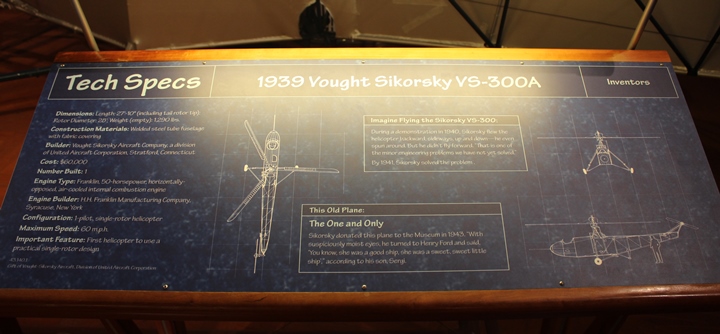
Developing a new technology is not without
its challenges and roadblocks. This information placard with the
VS-300 indicates that the aircraft could not fly forward during its
first historical flight. Author's photo.
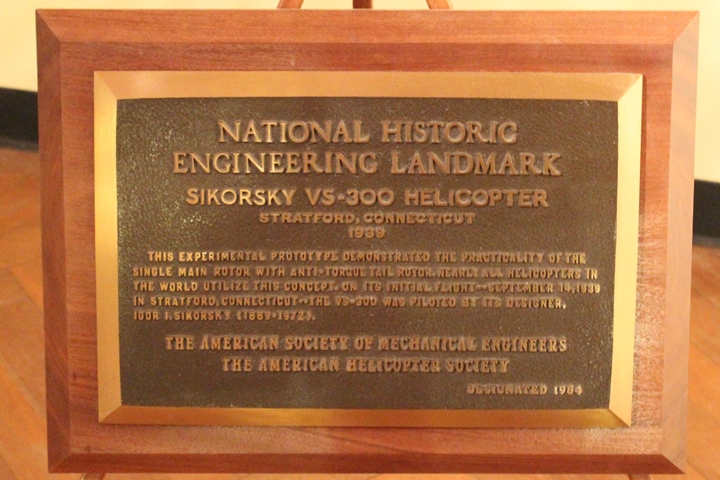
Author's photo.
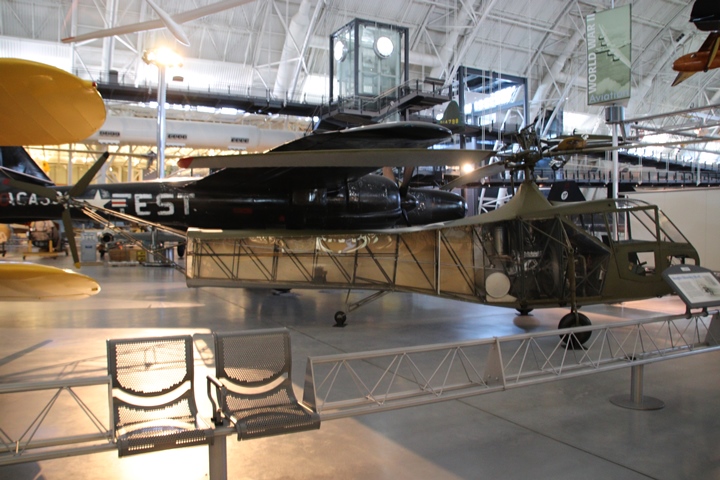
This helicopter display at the Udvar F. Hazy
Center of the National Air and Space Museum in Chantilly, VA, began my
thoughts of doing a page on Sikorsky-built helicopters. Two things
about this display caught my attention. Firstly, and
most importantly, this is the the XR-4, which was the first of the R-4
series of U.S. Army helicopters of World War Two. Secondly, this
is a cut-away which allows one to see the internal structure and
components of the aircraft. Author's photo.
This aircraft first flew on January 14,
1942. It exceeded all previous records for flight endurance and
altitude. To show its capabilities, it flew 761 miles between
Bridgeport, CT and Wright Field outside of Dayton, OH. It was
accepted by the Army on May 30, 1942. In January 1942, the Army
ordered 29 prototypes. The November 1944 issue of the "United
Aircraft News" noted on its front page that its Sikorsky Division had
manufactured 100 R-4B helicopters.
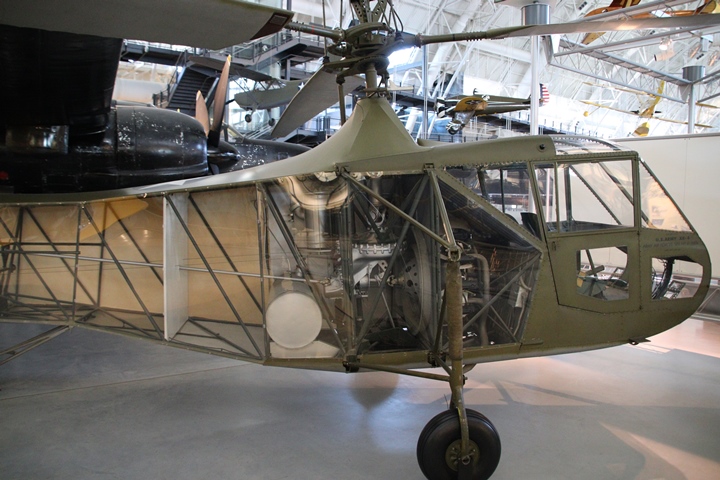
The original engine that was associated with
this aircraft when it was designated as an XR-4
was a Warner Model R-500-3 which produced 165 hp. The display
information placard at Udvar-Hazy shows this as an XR-4C because the
engine was later upgraded to a Warner R-550-1 with 180 hp. This is
the same original aircraft, but with a more powerful engine.
Author's photo.
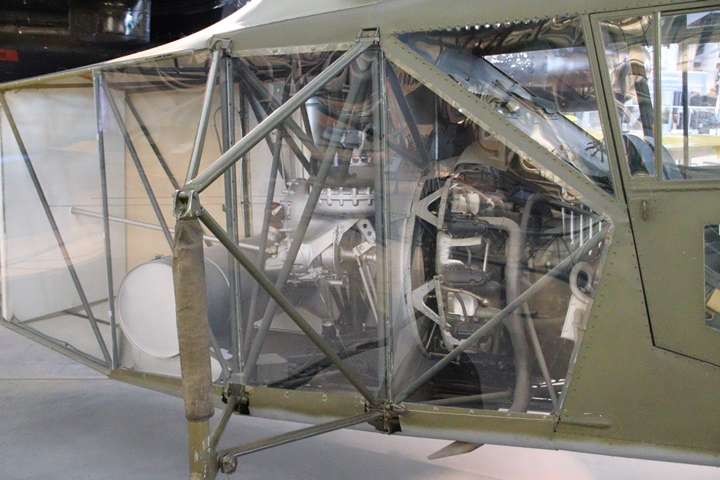
This photo shows the Warner R-550 180 hp
engine is right behind the pilot's and passenger's seat. Behind
that is the transmission for supplying power to the rotors. Lastly
is the fuel tank. A small diameter shaft can be seen running from
the transmission to the back to the rear of the aircraft. This is
the power shaft for the rear rotor. Author's photo.
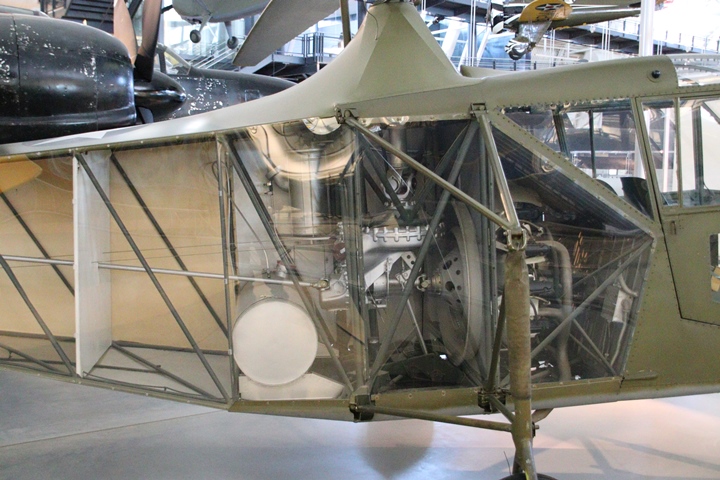
This view gives a better look at the
transmission and the shaft running out to the rear rotor. The
larger diameter main rotor shaft is connected to the transmission
through a universal joint. Author's photo.
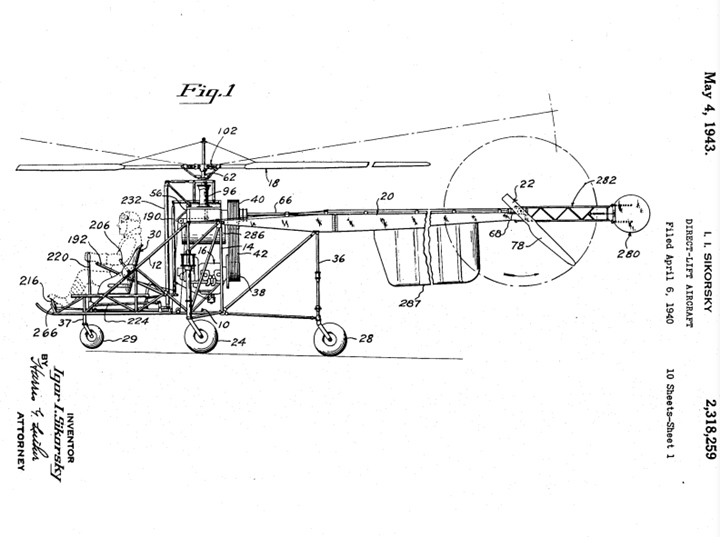
Igor Sikorsky was awarded another patent on
May 4, 1943, which had been filed on April 6, 1940. This was also
for a Direct-Lift Aircraft as was his previous patent previously
mentioned. The development of the helicopter was a continuous
process of improving the technology. The complete patent is shown
on the Sikorsky Patent Page.
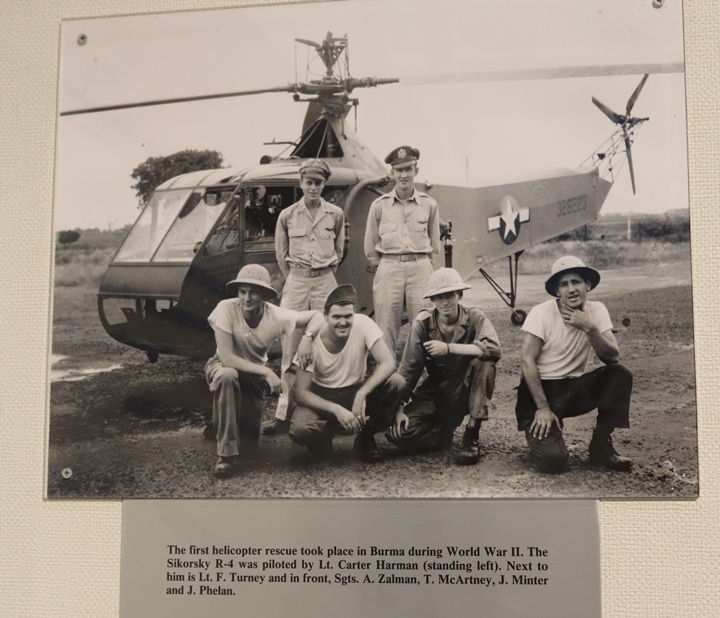
I live underneath the flight path of a
medical helicopter that runs between two hospitals in my area. The
helicopter usually makes at least one trip a day, some days more.
Most of the time I hear it but don't pay much attention, as it has
become a common occurrence. That was not always the case.
At first, the R-4 was an aviation curiosity
until it made its first rescue of a pilot and three injured soldiers
that crashed behind enemy lines in the Burmese jungle. It took
1st. Lt. Carter Harman three trips on April 22-23, 1944. to bring the
men out. This was the first of many rescues for the R-4 not only
in Burma, but the Philippines. Sikorsky helicopters have been
rescuing downed airmen and wounded soldiers ever since.
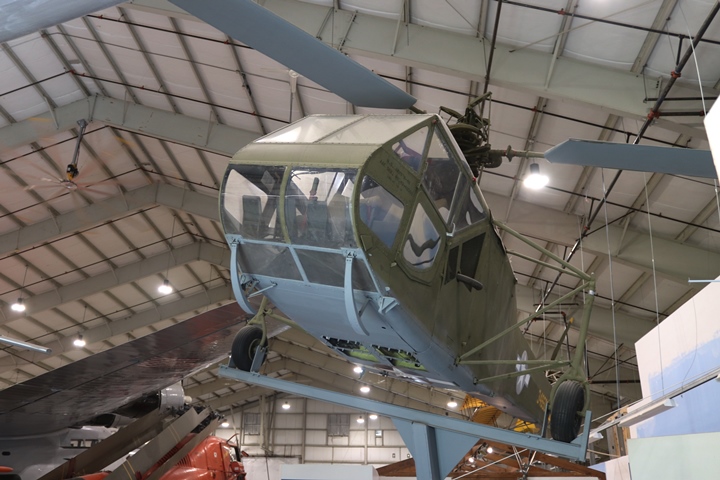
Fifty-five of the R-4Bs went to the U.S.
Army Air Forces, 23 went to the U.S. Coast Guard and U.S. Navy, and 52
to the Royal Air Force and Royal Navy. Twenty of the U.S.
Army Air Forces' R-4Bs were sent to the Pacific and Burma.
Thirty-five of the Army's R-4s were used for training at Freeman Field
in Seymour, IN. This aircraft is on display at the New England Air
Museum. Author's photo.
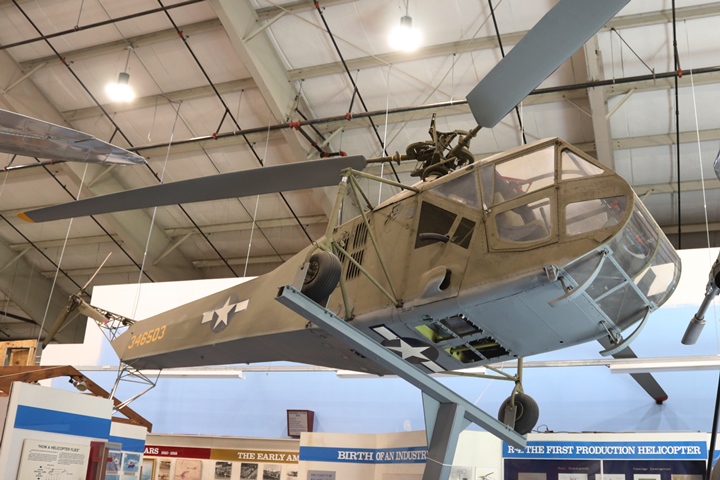
The name that the U.S. Army assigned the
Sikorsky R-4 series of helicopters was Hoverfly. Author's photo.
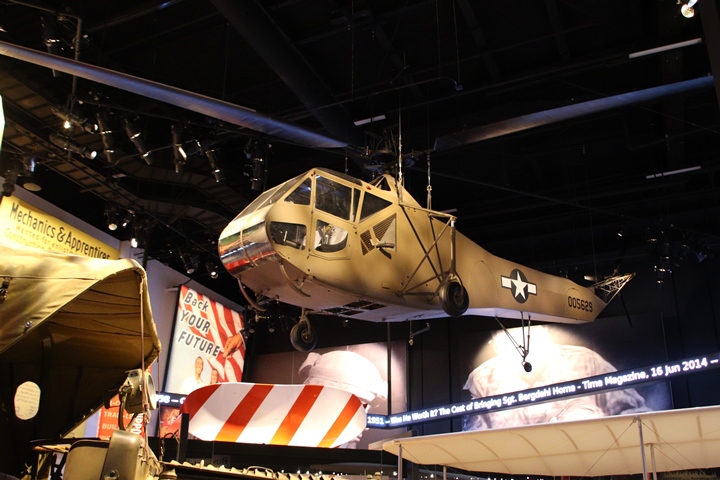
This example of an Army Hoverfly is on
display at the National Museum of the United States Army at Fort
Belvoir, VA. Author's photo.
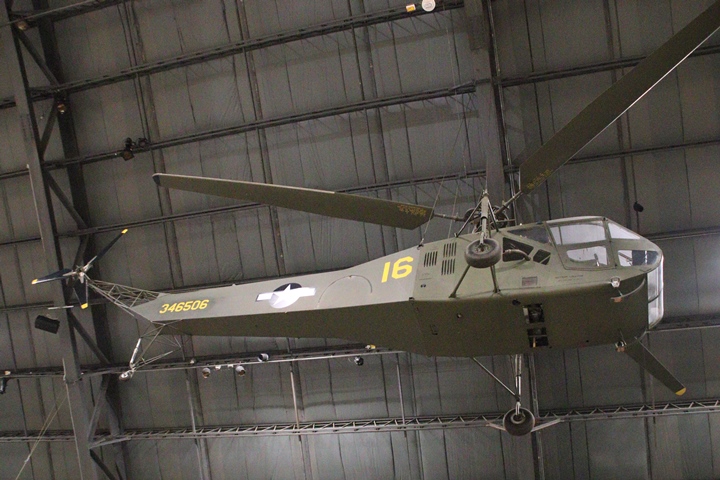
The National Museum of the United States Air
Force in Riverside, OH has this example of a R-4B on display in its
World War Two gallery. Author's photo.
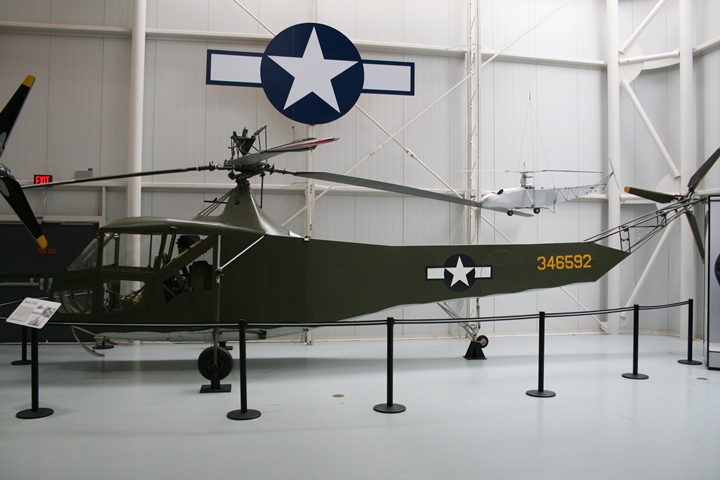
This Hoverfly is on display at the Army
Aviation Museum at Fort Rucker, AL. Author's photo.
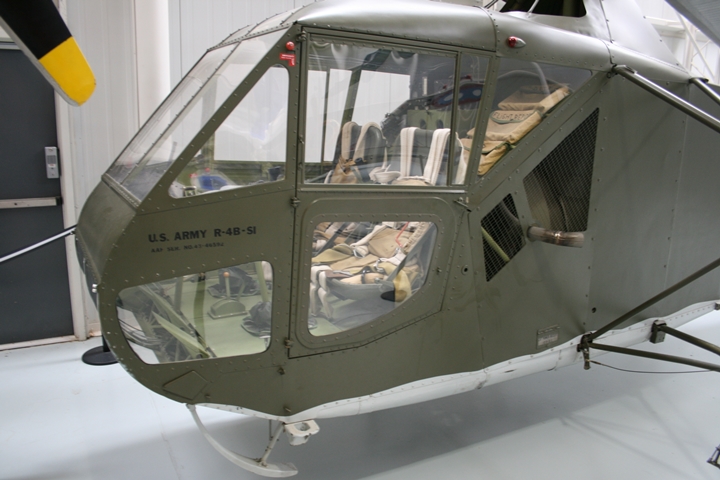
This is a closer look of the Hoverfly's
cockpit area. Author's photo.
Contract 535-AC-29005 in Table 1 for
$24,201,000 is most likely for the production of the R-4B Hoverfly.
However, there are some discrepancies in the data. Firstly, the
contract shows a completion date of December 1943, yet the "United
Aircraft News" noted that 100 R-4Bs had only been built by November
1944. Secondly, the unit cost for the 130 R-4Bs is $186,151, which
is very expensive. Most likely, the contract originally was for a
larger volume which was cancelled. The R-4B was the first step of
many to make the helicopter the useful aircraft it is today. It
was hard to fly and underpowered. Most likely, production stopped
so the company could focus on the production of the improved R-5A which
was beginning to come off the Sikorsky assembly line. Also,
development work was being competed on the R-6A which was produced by
Nash-Kelvinator.
Table 1- Sikorsky's
Major World War Two Contracts
The information below
comes from the "Alphabetical Listing of Major War Supply
Contracts, June 1940 through September 1945." This was
published by the Civilian Production Administration, Industrial
Statistics Division. |
|
Product - Customer |
Contract Number |
Contract Amount |
Contract Awarded
Date |
Completion
Date |
| Aircraft -
USAAF |
535-AC-15967 |
$50,000 |
1-1941 |
1-1942 |
| Rotary Wing
Aircraft - USAAF |
535-AC-29005 |
$24,201,000 |
12-1942 |
12-1943 |
| Airplanes -
USAAF |
535-AC-35340 |
$1,407,000 |
4-1943 |
6-1944 |
| Helicopters
MR5- USAAF |
535-AC-41023 |
$7,813,000 |
3-1944 |
8-1947 |
| Total |
|
$33,471,000 |
|
|
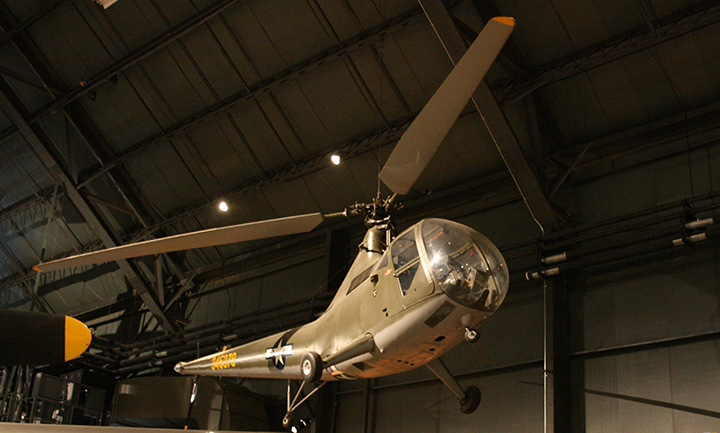
This Nash-Kelvinator-built R-6A is on
display at the National Museum of the United States Air Force.
Nash-Kelvinator was awarded the contract for the production of the R-6A
in order for Sikorsky to focus on the R-4 and R-5. R-6As were sent
to China and performed air rescue missions in that country late in World
War Two. Author's photo.
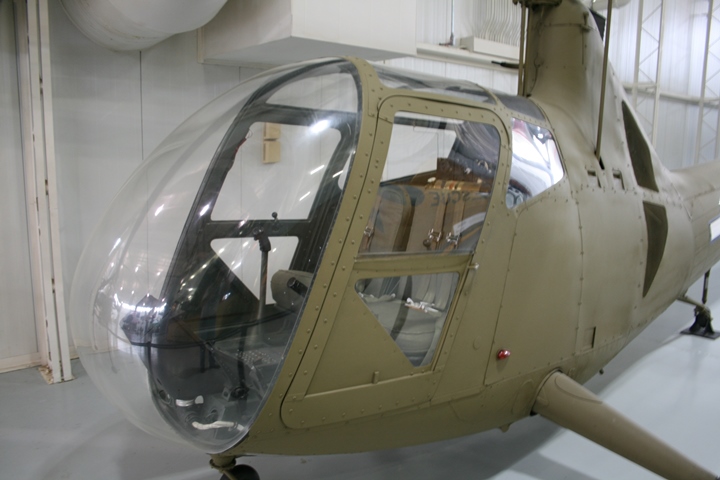
This is a close-up view of the R-6A on
display at the Army Aviation Museum. This shows the more
streamlined fuselage of the helicopter. Author's photo.
The Sikorsky model R-4 and R-6 series were
the only types built and used by the military during World War Two.
Sikorsky Post-World War Two Helicopters:
Helicopters with the Sikorsky name on them have been used in every major
military conflict since World War Two in which the United States has
been involved. Korea was a turning point in the use of helicopters
as they were used by all American military services in that war.
Also, other aviation companies were making helicopters at that time and
other companies furnished military rescue helicopters which saved the
lives of many military personal who were able to be air lifted out of
the combat zone and to a nearby field hospital for treatment.
Helicopters were finally able to perform this important function as Igor
Sikorsky and other helicopter advocates had been predicting for many
years.
The following photos show the technological
advancement of Sikorsky helicopters that Igor Sikorsky envisioned when
he attempted to build his first example in Kiev, Ukraine in 1909.
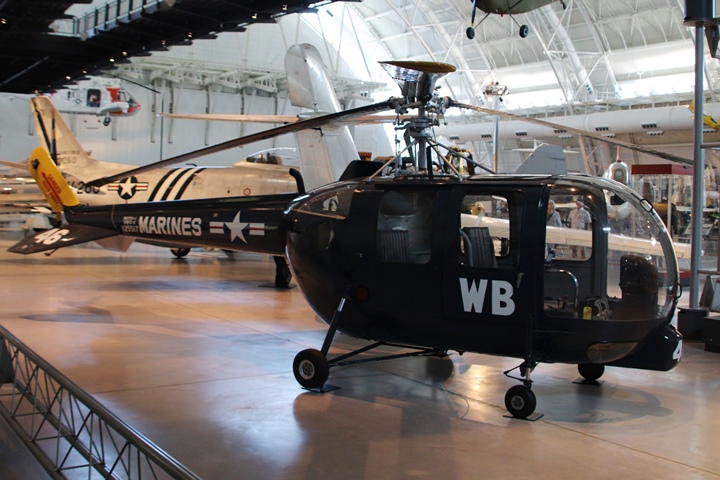
This is one of 79 HO5S-1 helicopters that
were built for the U.S. Navy and USMC. This type aircraft was the
Marines' primary medivac helicopter during the Korean War. The
front bubble opened and allowed for two patients and a medic to ride
inside the helicopter. Other medical evacuation helicopters
required the patients to ride on the outside of the aircraft. The
also did not allow for a medic to provide assistance enroute to the
field hospital. This aircraft is on display at the Udvar F. Hazy
Center of the National Air and Space Museum. Author's photo.
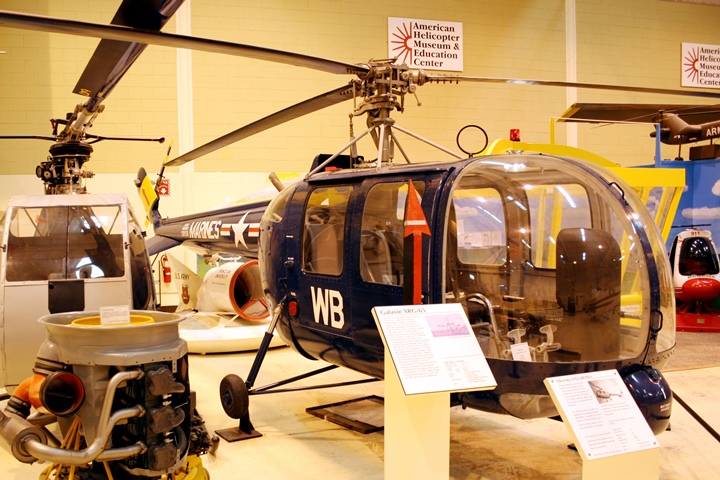
This
HO5S-1 helicopter is on display at the
American Helicopter Museum in West Chester, PA. Author's photo.
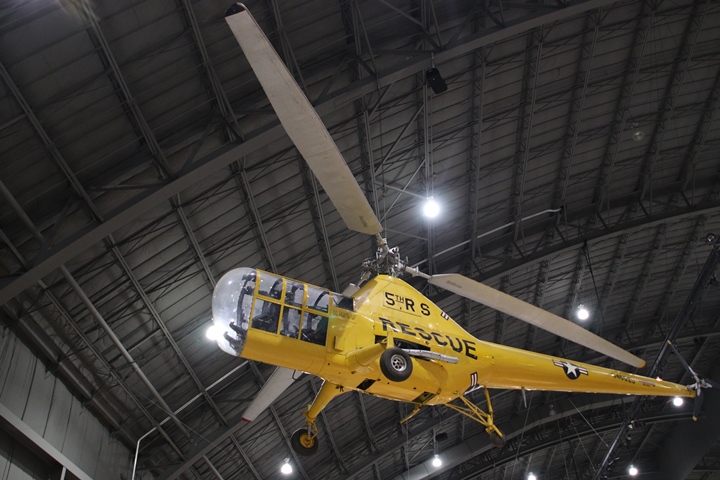
The United States Air Force used the
Sikorsky R-6 series for rescuing downed airmen in Korea. While the
R-6 was not available for World War Two, it was an important Air Force
aviation asset during Korea. This example is on display at the
National Museum of the United States Air Force. Author's photo.
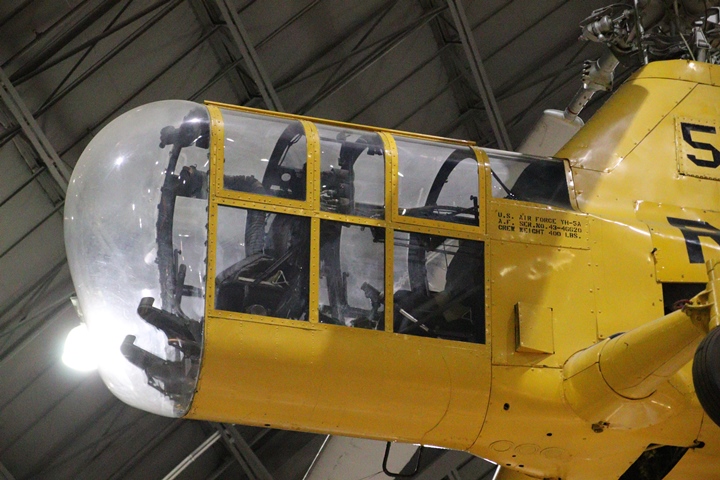
Author's photo.
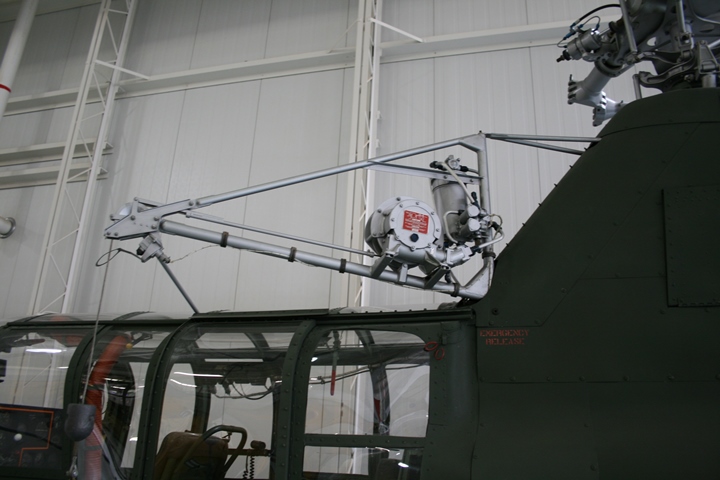
This R-5 at the Army Aviation Museum shows
the winch mechanism for lifting a litter while hovering about the
ground. Author's photo.
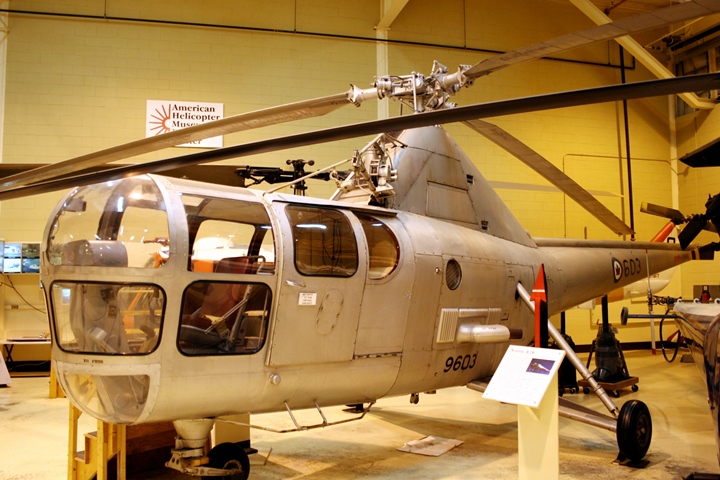
This R-5 is on display at the American
Helicopter Museum. Author's photo.
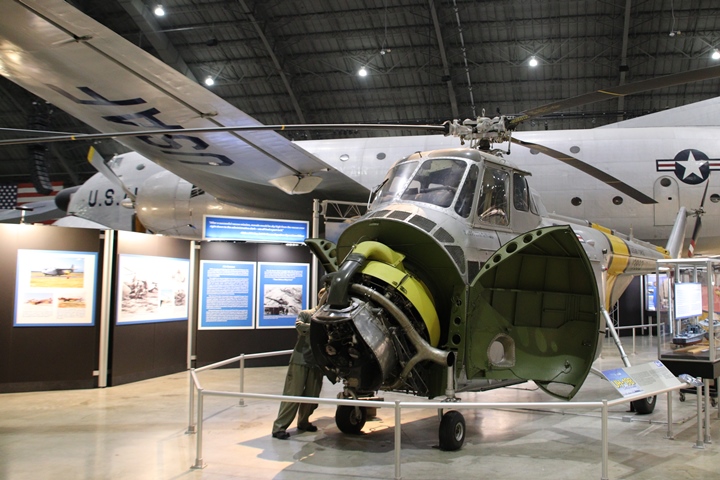
The U.S. Air Force also used the Sikorsky
H-19 helicopter for rescue missions in Korea. This is a deviation
from the design philosophy of having the engine in the center of the
helicopter. The H-19 was powered by a Wright R-1300 engine of 700
hp which was located at the nose of the aircraft. The aircrew's
location was above and behind the engine. The cargo area was
located behind the engine. Author's photo.
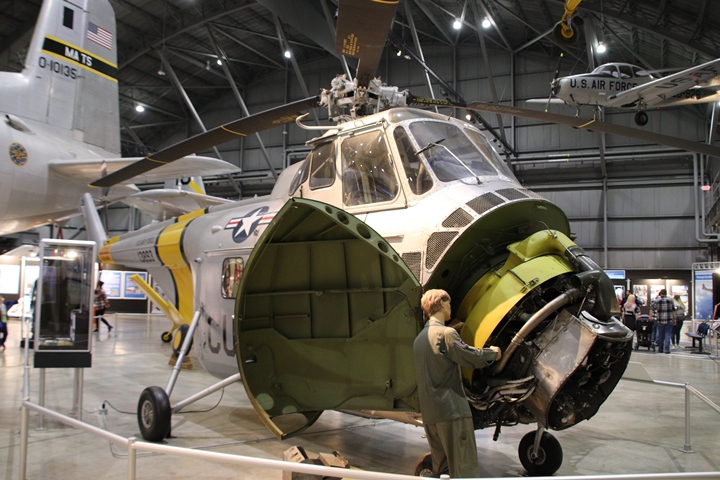
Having the engine at the front of the
helicopter allowed for easy maintenance as this example at the National
Museum of the United States Air Force shows. Note that the
aircraft has a nose wheel. Author's photo.
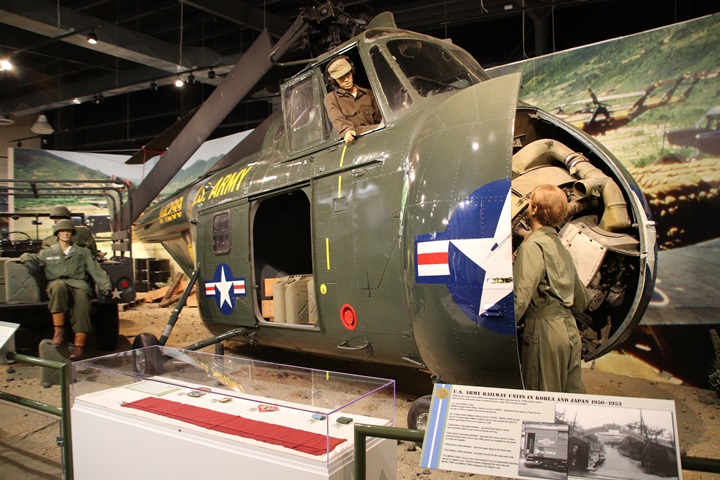
The U.S. Army also used the H-19 in Korea.
The H-19 could carry 1,300 lbs of cargo, ten fully equipped soldiers, or
eight litters and a medic in the aircraft's cargo area. This is a
quantum jump in load carrying capacity from the Sikorsky R-4B of the
World War Two era. This example is on display at the Army
Transportation Museum Fort Eustis, VA. Author's photo.
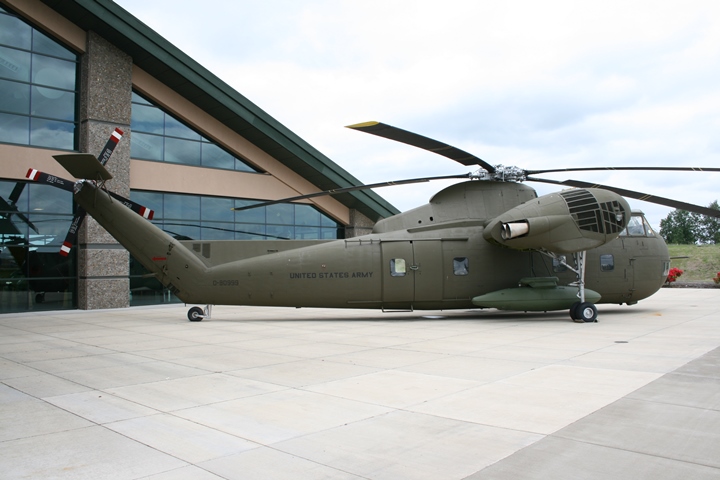
The Sikorsky CH-37 Mohave was the next leap
in helicopter capability as it was powered by two R-2800 engines of
1,900 hp each. This is the least known of the Sikorsky line of
helicopters as it saw service with both the U.S. Army and USMC with only
154 built. The CH-37 was unique with its engines located in pods
on either side of the fuselage and a retractable landing gear. It
could carry 36 combat troops or two jeeps or pieces of artillery in its
cargo area. Author's photo.
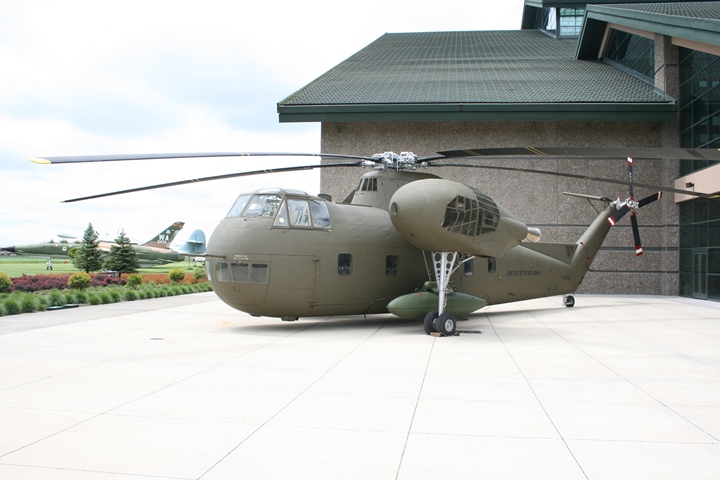
The U.S. Marines were the first to order the
CH-37 under its designation HR2S-1. The USMC ordered sixty of the
units for transporting troops from ship to shore. This is the best
example I have found of the Mohave. It is on display at the
Evergreen Aviation & Space Museum in McMinnville, OR. Author's
photo.
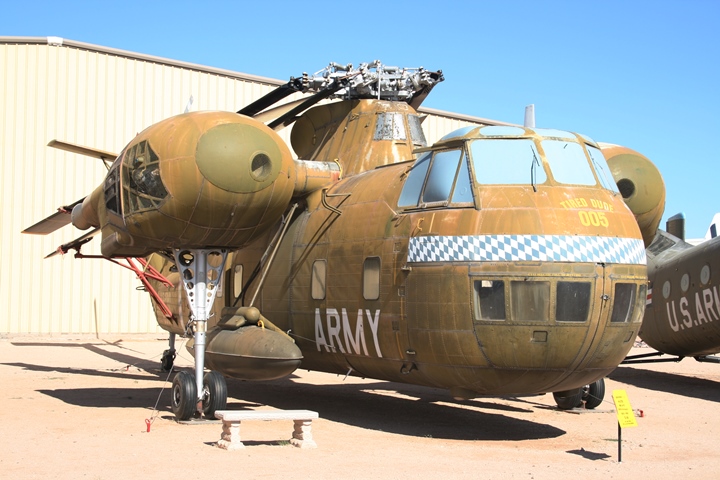
This example with the name "Tired Dude" is
at the Pima Air Museum in Tucson, AZ. Author's photo.
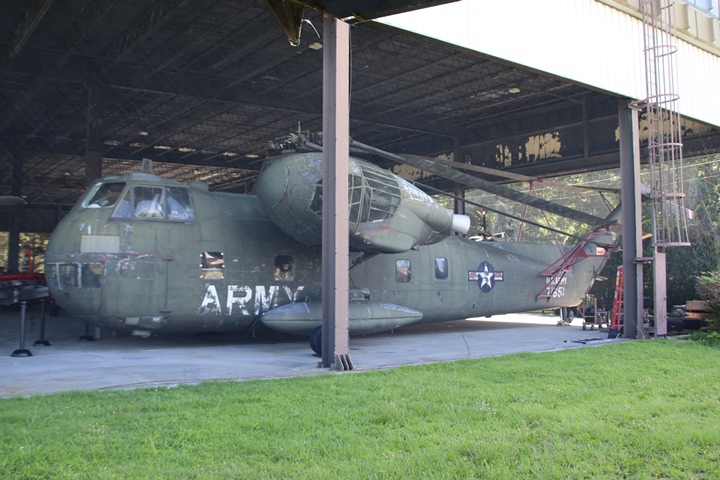
The CH-37 served with both the U.S. Army and
USMC in Vietnam. The Army sent four to Vietnam where they
specialized in retrieving both fixed and rotary wing aircraft that had
been shot down. This U.S. Army example is at the Army
Transportation Museum. Author's photo.
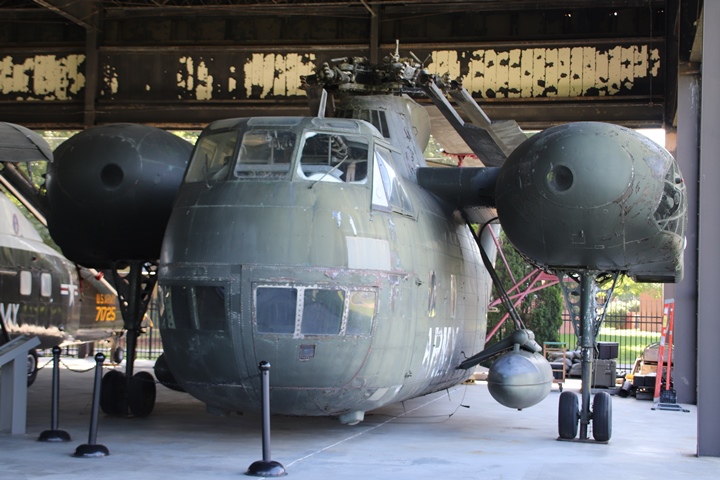
Author's photo.
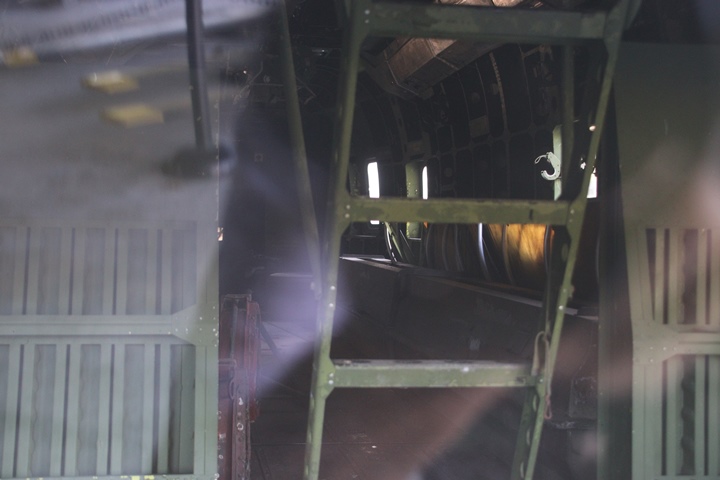
This is a view inside the CH-37 and shows
the ladder the aircrew used to access the flight deck. Author's
photo.
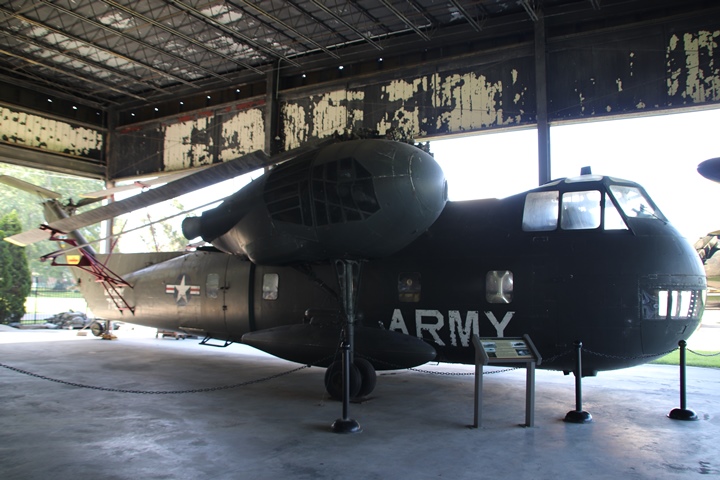
Author's photo.
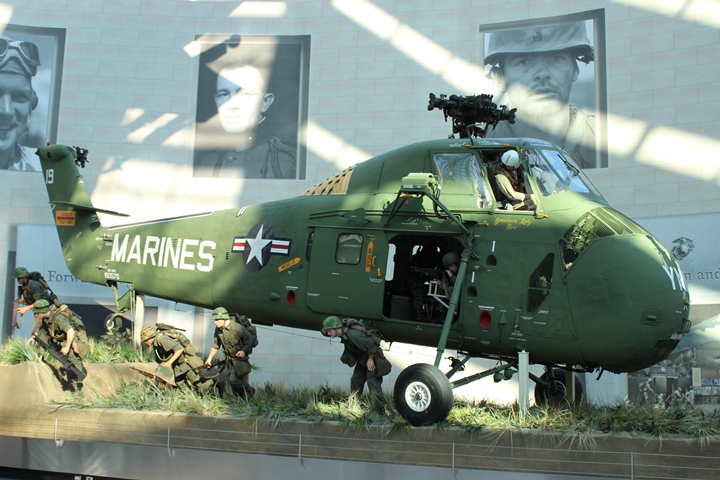
The CH-34 was the last of the Sikorsky
piston-powered military helicopters and was an advanced version of the
CH-19. It was equipped with an R-1820 1,525 hp engine and it had a
tail wheel rather than a nose gear. A total of 2,109 were produced
for the Army, Navy, and USMC. This diorama in the lobby of the
National Museum of the USMC depicts Marines making an airborne assault
early in the Vietnam War. Author's photo.
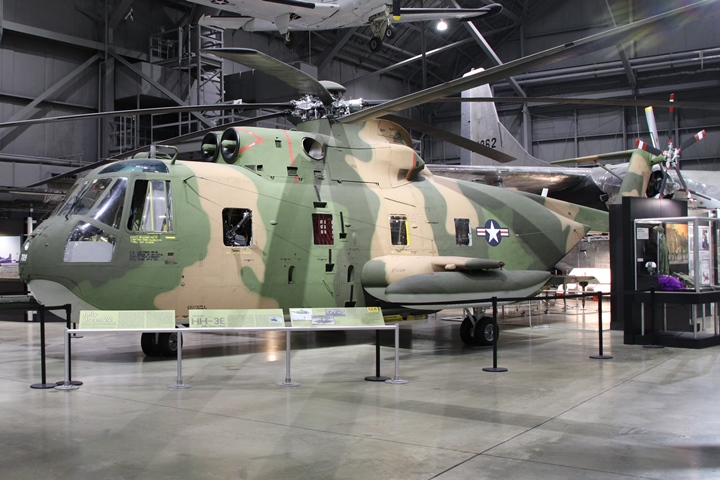
As noted above, a Sikorsky R-4B made the
first rescue of military personnel behind enemy lines in 1944. The
small R-4B had to make three trips to bring everyone out. Fast
forward 20 years to Vietnam and the United States Air Force had the
Sikorsky HH-3 helicopter to rescue downed air crews. In Vietnam,
when an aircraft was shot down by enemy fire, the rescue of the downed
crew became the Air Force's top priority. Attack aircraft and
fighters were diverted from other targets to provide suppression of
ground forces and anti-aircraft artillery.
The rescue aircraft of choice in Vietnam for
the USAF was the Sikorsky HH-3 commonly known as the "Jolly Green."
The HH-3s were a far cry from the under powered R-4s of the World War
Two era. They were powered by two General Electric T-58-GE turbine
engines that produced 1,500 hp each. The HH-3 had a crew of four
that included a crew chief and a gunner along with the pilots. It
came armed with two 7.62mm miniguns. The heroic rescues performed
under enemy fire by the Sikorsky Jolly Green crews are legendary.
This example of a Jolly Green is on display in the Vietnam era hangar of
the National Museum of the United States Air Force. Author's
photo.

The USAF HH-3s were equipped with a probe
for in-flight refueling. This was required for the long trips into
North Vietnam to rescue downed pilot. Author's photo.
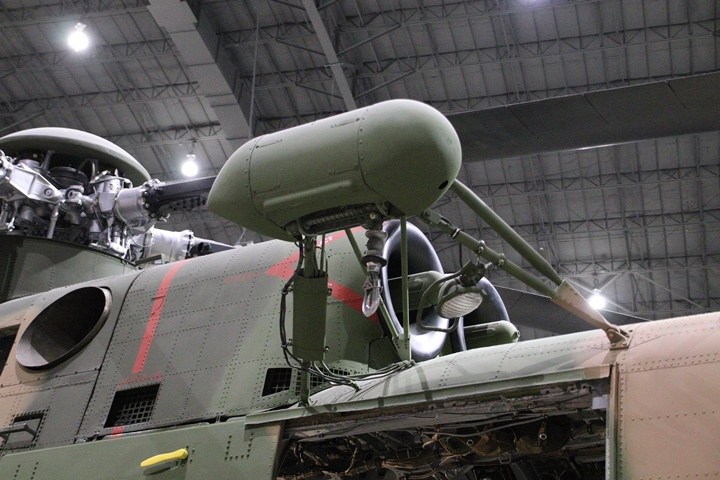
The aircraft was equipped with a winch for
extracting pilots while the aircraft hovered over the jungle.
Author's photo.
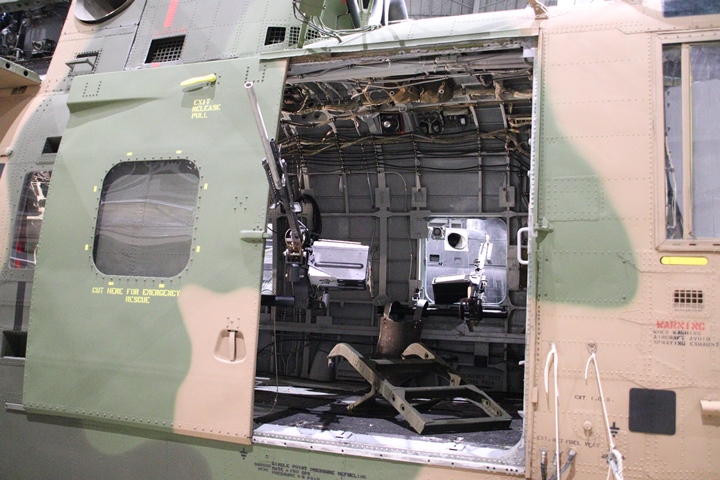
Author's photo.
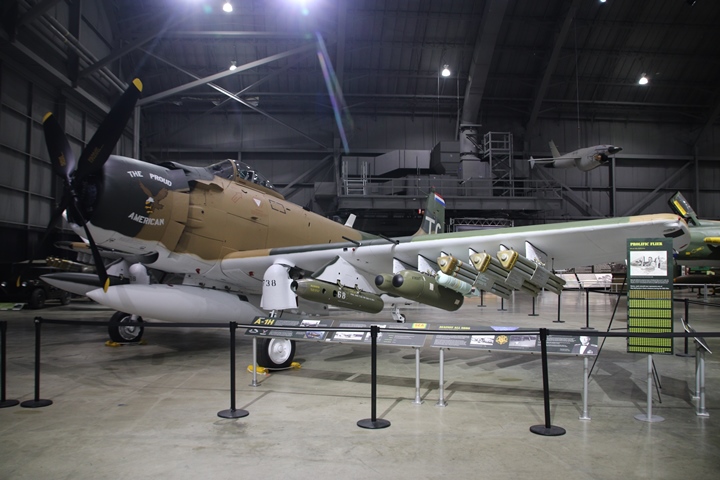
The Jolly Greens did not travel alone but had an escort of several
Douglas Skyraiders for suppressing ground fire during the extraction of
the downed airmen. The seemingly antiquated propeller-driven
Skyraiders could carry a large load of ordnance and had the endurance to
stay on station for extended periods that the jet aircraft of the era
could not do. Nicknamed "Sandys" when assisting in pilot rescues,
the Skyraiders were an important part of the rescue team. This
Skyraider was placed on display at the National Museum of the USAF in
late 2022. Author's photo.
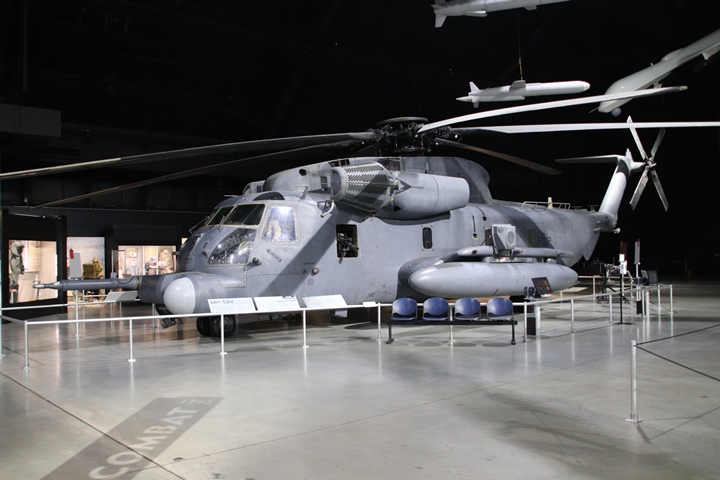
This is a USAF MH-53 also on display at the
National Museum of the USAF. This aircraft was originally a
Sikorsky CH-53 Super Jolly Green rescue aircraft. The CH-53
was the younger, but bigger, brother to the HH-3. It was powered
by three gas turbine engines and had a seven blade rotor to take
advantage of all of the power. This aircraft, while in Vietnam as
a CH-53, participated in the Son Tay Prison raid in North Vietnam in an
attempt to rescue American prisoners there. Unfortunately, the
prisoners of war had been removed from the prison several days later.
After the Vietnam war, this aircraft was
converted to the MH-53 configuration, where the M stood for
multi-mission which allowed the helicopter to covertly enter enemy
territory at night. Author's photo.
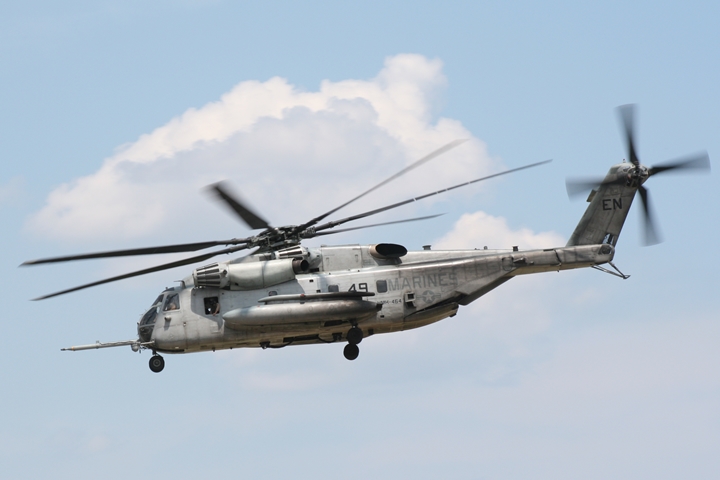
The USMC is the largest user of the CH-53.
Author's photo.
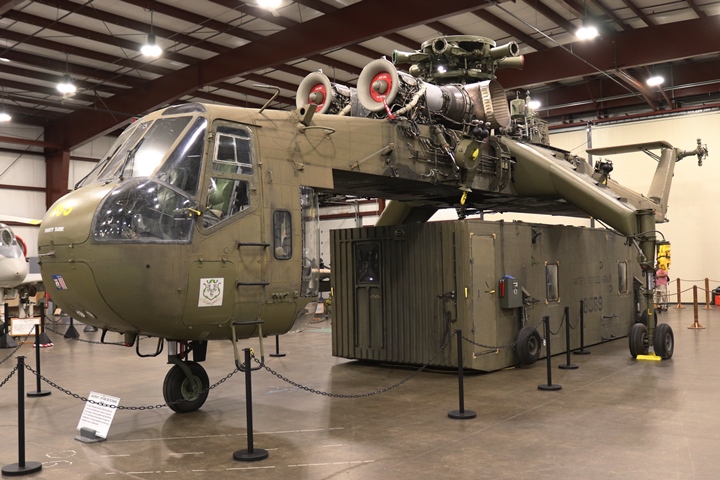
One wonders, when Igor Sikorsky was
struggling just to make a helicopter fly and develop the systems to
properly control it, would he have ever thought his endeavors would lead
to something like the CH-54 shown here, or the CH-53 previously shown?
This Sikorsky CH-54 heavy lift helicopter is on display at the New
England Air Museum. Author's photo.
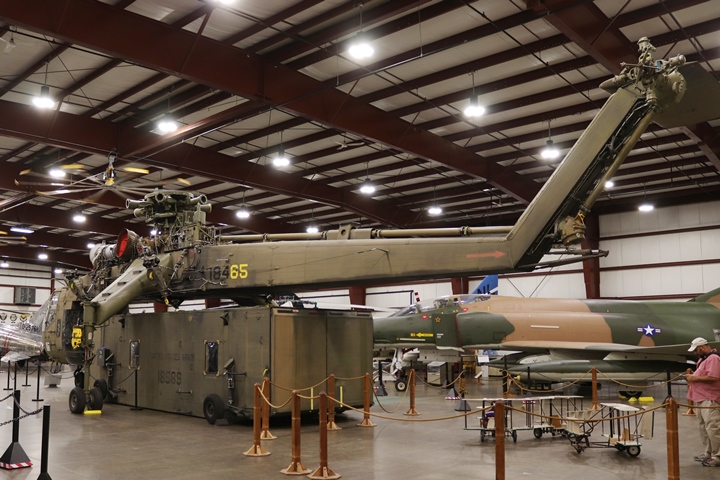
Author's photo.
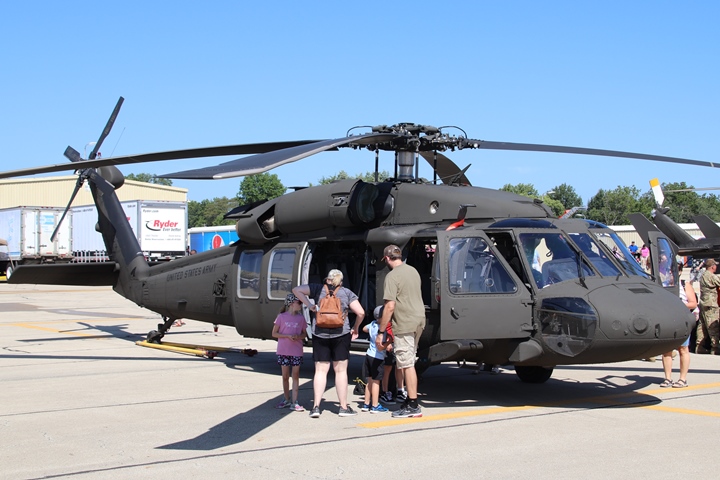
Currently, the U.S. Army, Navy, Air Force,
and Coast Guard fly various versions of the Sikorsky UH-50 helicopter.
This Illinois Army National Guard UH-60 was on display at the 2021
Decatur, IL Airshow. Author's photo.
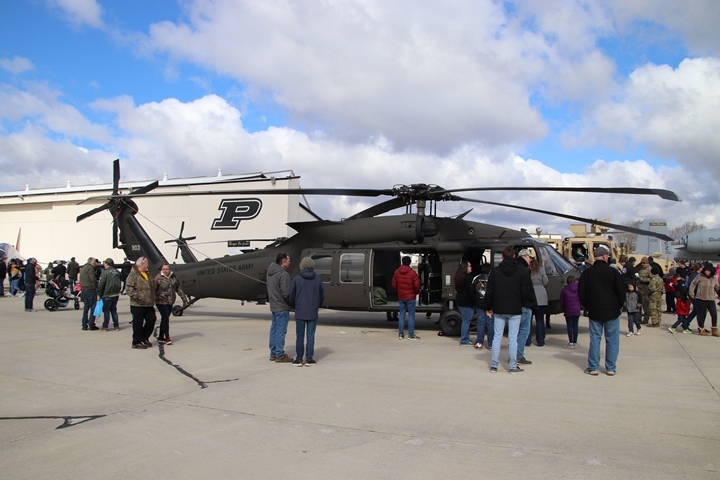
The Indiana Army National Guard also is
equipped with the Sikorsky UH-60. This one is being admired by
some of the crowd at the 2022 Purdue Aviation Day. In 1942, Igor
Sikorsky demonstrated his first military helicopter designed for
military use. During World War Two, Sikorsky R-4Bs introduced the
concept of vertical lift flight with its many applications. Eighty
years later, helicopters with the Sikorsky name are still the backbone
of the U.S. Army's helicopter fleet. Author's photo.
|


















































